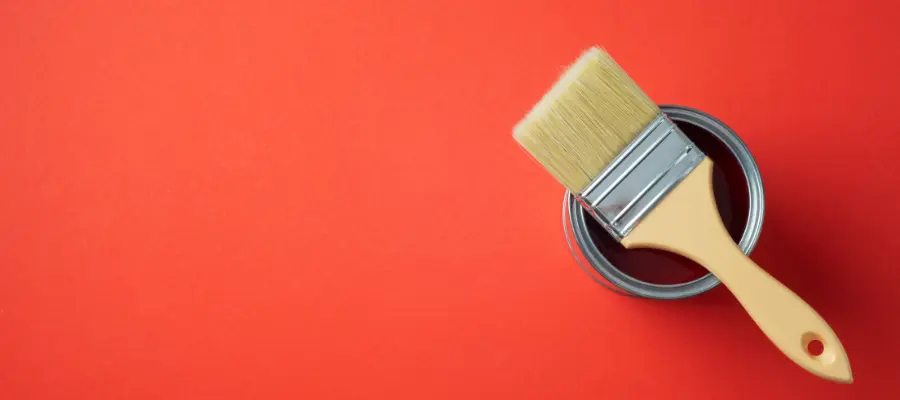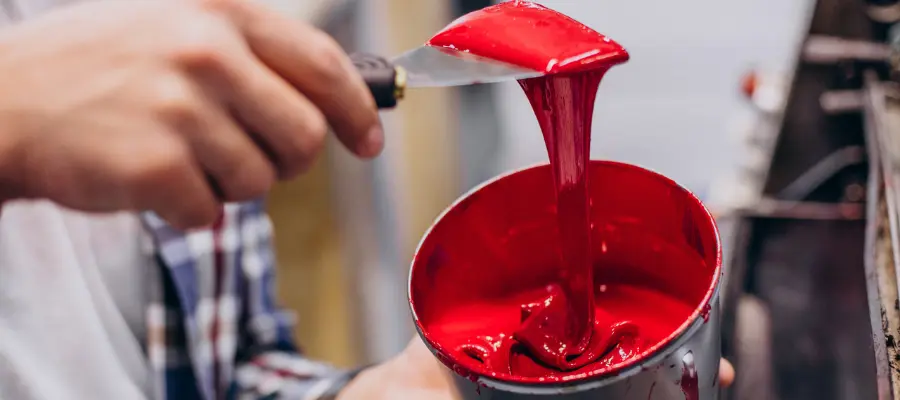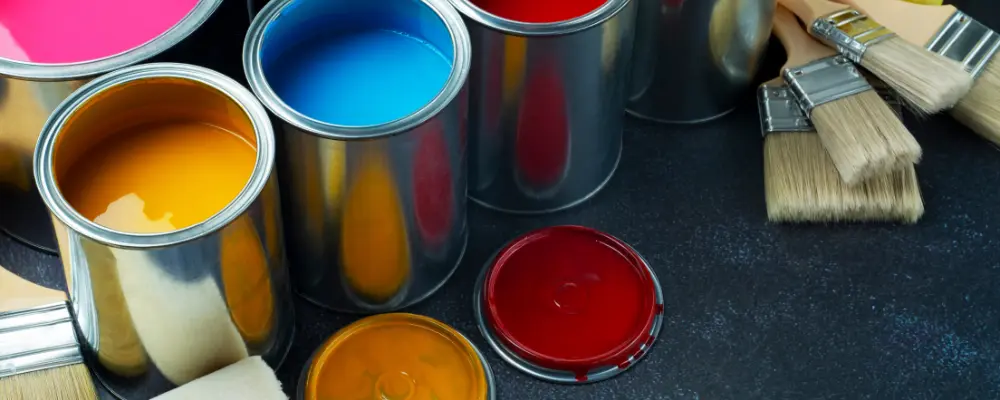Whenever you wish to change the outlook of your house or give a better look to your new home, choosing the right paint and colour combination is very important for a long-lasting and better finish. Numerous options are available for painting in the market. Synthetic enamel paint stands out for its versatility and durability. It will be the best choice for both indoors and outdoors.
This Brick & Bolt blog post will explore synthetic enamel paint, its advantages, common uses, application techniques, and how to select the right product for your project.
What is Synthetic Enamel Paint?
Synthetic enamel paint is a type of paint prepared with synthetic resins and solvents, this kind of paint are mostly used in Interior walls. This composition gives a hard, glossy finish that is highly resistant to moisture, chemicals, and abrasion. It is an environmentally friendly option.
Advantages of Synthetic Enamel Paint

There are numerous types of paints in the market, following are the major advantages which make synthetic enamel paint an exceptional choice.
1. Durability: These glossy paints are resistant to fading, stains, and scratches. They are, therefore, ideal for surfaces that are subjected to weather or frequent use.
2. Aesthetic Appeal: These glossy paints make surfaces look smooth and glossy. The glossy finish reflects light, making the home seem brighter and more lively.
3. Excellent Coverage: Paints made of synthetic enamel typically offer greater coverage, allowing for good surface concealment with fewer coats. Anything you don’t want on the wall can be covered up.
4. Time-Saving: These paints speed up painting projects because of their quick-drying nature. Quick drying reduces the possibility of dust or other particles adhering to the wet paint, enabling quicker recoating and more effective painting.
5. Versatility: Paints with synthetic enamel can be applied to a variety of surfaces, including concrete, metal, wood, and more.
6. Chemicals and Stains Resistance: Paints made of synthetic enamel frequently withstand stains and chemicals. Hence, they are more appropriate for places that are prone to staining, such as bathrooms and kitchens.
7. Simple to Clean: Synthetic enamel-painted walls are easy to maintain. You can wipe them down with a wet cloth or a mild soap and water solution.
8. Moisture Resistance: Synthetic enamel paints are highly resistant to moisture, making them an ideal choice for areas prone to dampness or humidity. This moisture-resistant property can help protect your home during the monsoon season.
Common Uses of Synthetic Enamel Paint
Synthetic enamel paint is applied for different purposes. Following are some of the main:
1. Furniture and Cabinets
This glossy paint offers a hard and glossy finish, making it ideal for furniture, cabinets, and other woodwork for the home. It gives a sleek and durable finish. It makes easy to clean the furniture and cabinets.
2. Interior Walls
Synthetic enamel paints are a better element for interior wall designs, especially in areas that are likely to stain and open to moisture. Which will make it easy to clean. This can help to keep a hygienic environment in the interior of your home.
3. Metal Surfaces
The paint adheres well to metal surfaces, making it suitable for painting metal, machinery and other metal products. Provides a protective layer to prevent corrosion.
4. Wooden Surfaces
Synthetic enamel paint provides a barrier against moisture, insects, and corrosion on wooden surfaces. It is frequently used for skirting boards, window frames, and wooden doors. The paint seeps into the grain of the wood, protecting it from harm and adding a glossy sheen to bring forth its inherent beauty.
How to Apply Synthetic Enamel Paint

Use these procedures for applying synthetic enamel paint to ceramic, wood, or metal surfaces:
1. Surface Preparation
Verify that the surface is dry and clean and free of debris, grease, or loose paint. If it’s uneven, use sandpaper to smooth it. Fill up any holes with wall putty. As a result, you’ll have a smooth painting surface. Appropriate surface preparation is necessary for the best adherence and durability of the finish.
2. Priming
Use a higher-quality primer that is appropriate before applying synthetic enamel paint. This will result in a smoother, more even finish and better adherence.
3. First Coat
For even coverage, evenly apply the first coat of synthetic enamel paint using a brush or traditional spray. Prior to painting, make sure the surface is level and smooth because imperfections may show through the paint.
4. Drying
In order to prevent mixing, which could result in paint runs or streaks, the wall should be fully dry before applying the second coat.
5. Second Coat
After the first coat dries, apply a second coat for better coverage and to fix any missed spots. Once the second coat is dry, rub the surface with fine sandpaper. This will give the surface a glossy, even finish. Also, smooth out any brush strokes and give the paint a professional look.
How to Choose the Right Synthetic Enamel Paint?
Before selecting the right synthetic enamel paint, you must understand your requirements and the properties of different paints. Following are some of the key factors to consider.
Consider the Surface
Consider the surface of what you are going to paint. The surface material determines the type of paint you should choose. The paint should have the respective properties to protect the surfaces.
Colour and Finish
Look into all colour paint options and choose a shade that complements your space or project. Some manufacturers offer custom colour-matching services. You should choose the colour based on the project requirements, such as a matte finish or glossy finish. Choosing the right colour can be a daunting task, especially for interior spaces. For helpful tips on how to choose the interior paint colours for your home, check out our comprehensive guide.
Paint Quality
The quality of the paint affects the application process and the final result. High-quality paint generally provides better coverage and requires fewer coats and less paint. It can also be durable, clean and wear-resistant. Although high-quality paints may be more expensive initially, their longevity and reduced need for repainting can make them more cost-effective in the long run.
Cost Implications
When selecting a high-quality synthetic enamel paint, it’s also important to consider the cost implications. The painting cost can vary depending on factors such as the brand, quality, coverage area, and location. For example, if you’re painting a home in Bangalore, you can refer to our guide on painting cost per square foot in Bangalore to get an estimate of the expenses involved.
Environmental Impact
Some paints contain volatile organic compounds (VOCs) that are harmful to the environment and human health. Choosing low-VOC or VOC-free paint is an environmentally friendly choice. Additionally, since these paints have low odour, they make the painting process even more enjoyable. To learn more about the differences between solvent-based and water-based paints, check out our detailed guide.
Manufacturer’s Instructions
Following the manufacturer’s directions guarantees the best possible outcome when applying paint. These recommendations generally include important information such as how many coats to apply to get full coverage, how long to let each coat dry between application of coats and the best way to apply the paint—brushing, rolling, or spraying. By carefully following these instructions, you may select the paint that’s best for your project and get a finish that looks professional.
Conclusion
Synthetic enamel paint is an excellent choice for many painting projects both indoors and outdoors. Provides excellent protection against moisture and chemicals. You can choose the best enamel paint by understanding its benefits, general areas of use, application techniques and requirements. It is an excellent choice for decorating furniture, decorating interior and exterior walls or protecting metal surfaces.

